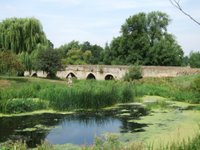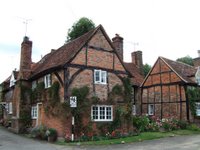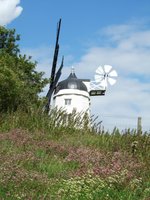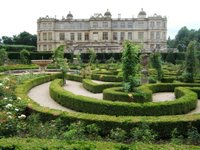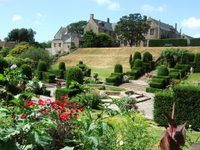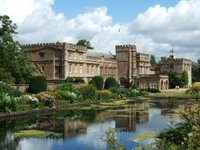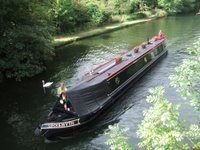 Reading probably does not figure highly in the list of “must visit” places in Britain but we were pleasantly surprised by what we found.
Reading probably does not figure highly in the list of “must visit” places in Britain but we were pleasantly surprised by what we found. 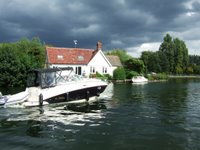 The local museum has an interesting presentation on the history of the town and, amazingly, a full-scale copy of the Bayeux Tapestry; made in the early 1900s.
The local museum has an interesting presentation on the history of the town and, amazingly, a full-scale copy of the Bayeux Tapestry; made in the early 1900s. Reading Abbey was founded by Henry I as a place to be buried but, most inconveniently, he died in France. To preserve his body for the one-month trip back, it was sewn into a bullock’s hide. (I would not have wanted the task of opening the stitching at the journey’s end.)
Reading Abbey was founded by Henry I as a place to be buried but, most inconveniently, he died in France. To preserve his body for the one-month trip back, it was sewn into a bullock’s hide. (I would not have wanted the task of opening the stitching at the journey’s end.)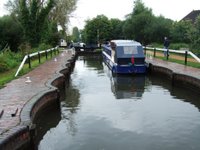 Several Henrys later (1539) the abbey suffered the same fate as other abbeys in The Dissolution and was recycled as building material by the locals.
Several Henrys later (1539) the abbey suffered the same fate as other abbeys in The Dissolution and was recycled as building material by the locals.The town was founded at the confluence of the Thames and Kenet rivers and thus provides plenty of riverside walks.
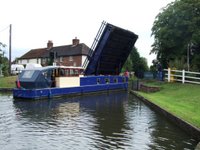
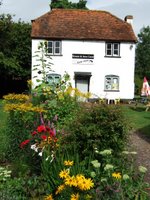
Sunday we explored Aldermaston lock, unusual in that it has scalloped sides. Just below the lock is a lifting bridge that creates a reasonable delay for the traffic while the bridge lifts, the narrow-boat passes underneath and the bridge returns to the horizontal.
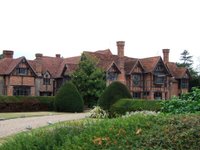 En-route back to London we stopped of at Dorney Court an amazing timber and brick Tudor Manor House that has been in the ownership of the same family basically since it was built. It is often used as a film set.
En-route back to London we stopped of at Dorney Court an amazing timber and brick Tudor Manor House that has been in the ownership of the same family basically since it was built. It is often used as a film set.
